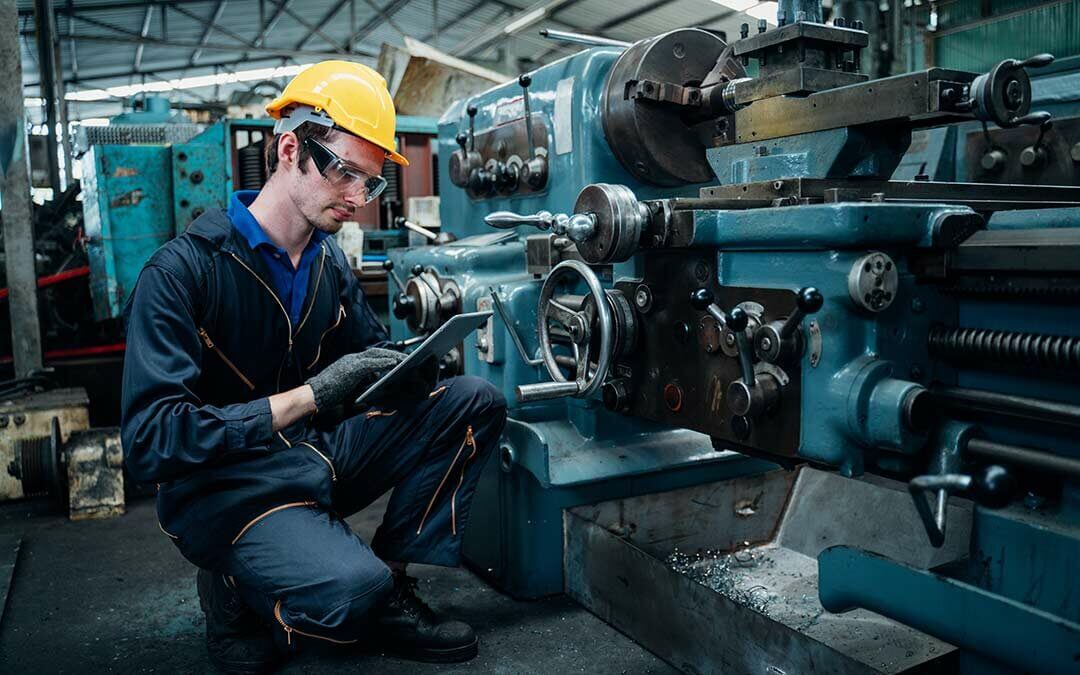Today’s Connected Worker
Let’s start by talking about just how relevant connected workers are in today’s world and just what a connected worker is. In a nutshell, a connected worker is one that has adopted a digital transformation and utilizes wearable technology, sensors, asset tracking and field testing devices to perform duties, especially when it comes to industrial and field environments. Many have discovered that adopting a more connected mindset can accelerate efficiency and productivity – and amid the COVID-19 pandemic, this is perhaps more important than ever.
According to Kearney, humans are still a very large part of industrial work. In fact, according to a Kearney survey, “The State of Human Factory Analytics,” some 72 percent of the tasks in a factory are performed by human workers, with 71 percent of the value created by such operations derived from human actions. Furthermore, research from Accenture states that 85 percent of manufacturers believe connected workers will continue in manufacturing environments.
The data backs up a global workforce that continues to trend upwards. According to Polaris, the global connected worker market was valued at $2,830.02 million (USD) in the year 2019, with a continuous average growth rate (CAGR) of 19.9 percent.
Another significant development is what workers have to say about the adoption of a more connected workforce. According to Deloitte, nearly half of all workers say technology would make their jobs easier, faster and more efficient overall. Greater efficiency equals greater productivity, which could, in theory, have a positive effect on the bottom line.
Enabling the Connected Worker
So how do you create and enable a more connected workforce? One important factor that cannot be ignored is leadership. That’s right, technology needs to be enabled by management and leadership. This is the spark that will ignite further developments down the workforce that will enable workers to adopt the digital technologies necessary to foster two-way communication between management and the frontline. Another important consideration is to ensure that any change that is made keeps safety for the worker a priority. Amid the ongoing COVID-19 pandemic, that’s perhaps more important than ever.
In fact, according to a report from LNS Research, some 70 percent of industrial firms changed their personal protective equipment (PPE) requirements to better safeguard their workers and prevent infection from the coronavirus. Additionally, more than 40 percent changed shift start and stop processes to better allow for social distancing, and 35 percent established remote access to scale subject matter experts who are no longer able to travel. However, while workers are experiencing increased safety measures at the workplace, they still need to find new ways to connect with their peers – and if humans are still performing the vast majority of tasks in these industrial environments, this cannot be downplayed. On this note, technology should be integrated so that it’s a partner – not a replacement.
Connect Your Workforce by Leveraging Technology
How do you enable a more connected workforce? Here’s a look at some suggestions:
- Leverage mobile devices: Digital transformation is already in your pocket- We often forget how versatile our own mobile devices can be to leverage within a business. Don’t forget about the potential that your smartphone holds.
- Utilize the Internet of Things (IoT): Whether it’s automating certain dangerous tasks, deploying robots or remote maintenance, the Internet of Things is a huge resource that’s largely untapped and ripe with tons of potential.
- Anvl’s solutions for the frontline enable connected workers to put safety, quality, and efficiency at the forefront of every operation. If you’re looking to support a more connected workforce and help stay in constant communication with the people that power your business, Anvl Insights and Anvl Workforce are two ideal solutions to deploy.
See Anvl in Action Today
The connected worker is more important now than ever, and Anvl has the solutions to make this possible. From software to automated paperwork and processes to delegating responsibilities and ensuring accountability, Anvl’s solutions help permit a more connected workforce and a more efficient overall operation. For more information and to request a demo to see Anvl in action, contact us today.


